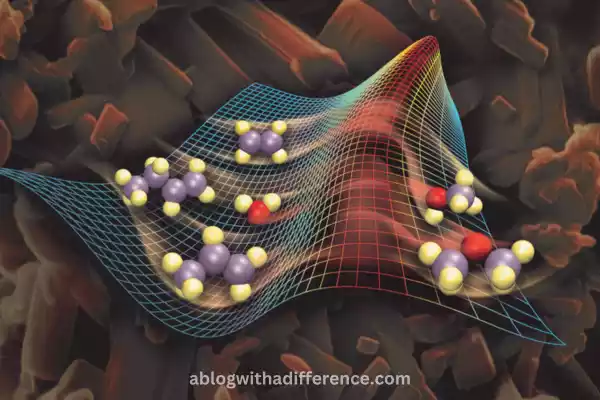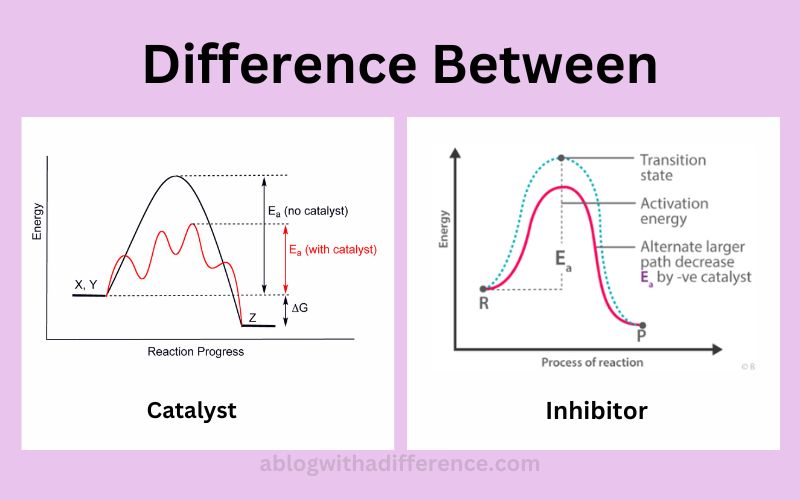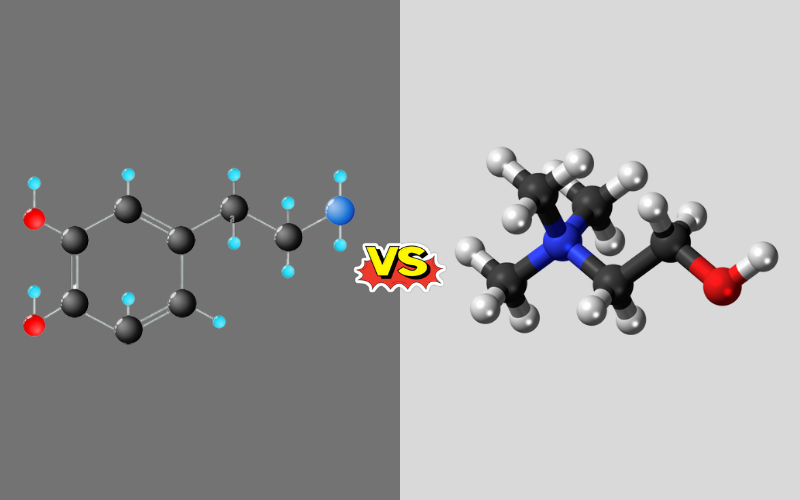Difference Between Catalyst and Inhibitor
Definition of Catalyst and Inhibitor
Catalysts are compounds that accelerate chemical reactions by decreasing activation energy requirements without altering or degrading any properties during activation, speeding up their reactions while contributing to new product creation. Catalysts boost reaction speed as well as assist with new product manufacturing.
An inhibitor is defined as any substance that prevents chemical reactions from taking place by binding to either reaction agents, catalysts, or both to slow their reaction speed and reduce the rate. They may act either reversibly or irreversibly and are commonly employed to control chemical processes across various industrial applications.
Importance of Catalysts and Inhibitors in Chemical reactions
Catalysts and Inhibitors play essential roles in many chemical reactions. Their main purpose lies in controlling and speeding up reactions as needed.
Catalysts play an invaluable role in modern industry by expediting chemical reactions quickly and efficiently – something crucial in many industrial processes. Additionally, catalysts reduce energy requirements to start reactions resulting in cost savings as well as environmental benefits; many everyday products containing fertilizers, pharmaceuticals, and fuels use catalysts extensively during manufacture.
Inhibitors play an essential role in chemical regulation by acting to regulate chemicals precisely and deliberately.
They can stop unwanted reactions, limit reaction speed to specific amounts or block specific pathways of reaction – which make inhibitors great tools in many fields like polymer manufacturing, food processing, or treating disease. Inhibitors find their place across many applications such as manufacturing polymers or treating diseases.
Controlling chemical reactions using catalysts and inhibitors is vital in multiple fields of research, industry and technology, having an enormous effect on society.
Catalyst
Catalysts are chemical substances that accelerate chemical reactions without being consumed; thus enabling their continuous work. Due to this effect, only small amounts are necessary for specific chemical reactions.

Catalysis provides an alternate means of conducting chemical reactions by decreasing energy requirements to start and sustain reactions. Catalysts work in concert with reactants, producing intermediate products. Once reactions have been completed, catalysts can be removed from intermediate phases for regeneration purposes.
There are two kinds of catalysts Homogeneous and Heterogeneous. Homogeneous catalysts consist of particles in the same phase with reactant molecules; for heterogeneous catalysts (e.g. enzymes), their state differs significantly from their counterpart reactants’ molecules – thus providing biological catalysis agents such as enzymes with catalytic power.
Inhibitor
Inhibitors are substances that hinder or slow down chemical reactions. They are vital components in regulating the pace and specificity of reactions in various processes. Unlike catalysts, which accelerate reactions without being consumed in the process, inhibitors work by interfering with the reactants or enzymes involved in the reaction.
There are two main types of inhibitors:
- Reversible Inhibitors: These inhibitors form temporary bonds with the reactants or enzymes, leading to the formation of reversible complexes. As a result, the inhibitory effect can be reversed, and the reaction can proceed once the inhibitor is removed.

- Irreversible Inhibitors: Irreversible inhibitors create strong covalent bonds with the reactants or enzymes, causing permanent inactivation. Once these inhibitors bind to the active site of an enzyme, the enzyme loses its catalytic activity and cannot participate in the reaction anymore.
Inhibitors play a crucial role in various biological processes, ensuring that specific reactions occur when needed and preventing harmful side reactions. Additionally, they are used in industrial processes to control and optimize chemical reactions, thereby increasing the yield and purity of products.
By understanding the properties and mechanisms of inhibitors, scientists and engineers can design better and more efficient reactions for diverse applications.
Difference Between Catalyst and Inhibitor
Both Catalysts and inhibitors have the capacity to modify the rate of chemical reactions; each act in unique ways to impact them in this regard and have differing impacts on reaction speeds.
Here are the key differences between Catalyst and Inhibitor:
1. Definition and Purpose: Catalysts are chemicals designed to speed chemical reactions by decreasing the energy required to trigger them while not themselves being altered or consumed; their purpose is enhancing speed while inhibitors prevent chemical reactions by binding to catalysts or reactants and blocking chemical processes altogether.
2. Their mechanism of action: lies in providing an alternative route with lower activation energy that eases reactant formation of products, and inhibition via binding agent/catalyst interactions to either stop the reaction altogether or reduce its rate.
3. Their Effect on Reaction Rates: Catalysts increase the speed of chemical reactions while inhibitors diminish them.
4. Examples: Catalysts include metal catalysts, enzymes, and acid catalysts while inhibitors include poisons, drugs, and enzyme inhibitors.
5. Industrial Applications: Catalysts have many applications within the industry to promote reactions, reduce energy use and enhance product quality, while inhibitors serve to manage and regulate chemical reactions within various industrial processes by stopping undesirable reactions, slowing their rate to some degree, or blocking certain pathways within reactions.
Both Catalysts and Inhibitors impact chemical reactions differently and have various impacts on the rate of reaction; it’s therefore imperative that industrial professionals and chemists who must manage and direct chemical processes understand these distinctions to do their jobs successfully.
Similarities between Catalyst and Inhibitor
While catalysts and inhibitors have opposite effects on reaction rates, there are also some similarities between these two substances:
1. Both catalyst and inhibitor affect the rate of a chemical reaction, albeit in opposite ways.
2. Both catalyst and inhibitor can be used in industrial processes to control and regulate chemical reactions, improve product quality, and reduce energy consumption.
3. Both catalyst and inhibitor can be specific to certain reactions or reactants, making them useful for selectively controlling reaction pathways or preventing unwanted reactions.
4. Both catalyst and inhibitor can have drawbacks, such as unwanted side effects or the potential for inhibiting desirable reactions in addition to unwanted ones.
While catalysts and inhibitors have opposite effects on chemical reactions, they share some similarities in terms of their applications, specificity, and potential drawbacks.
Conclusion
Catalysts are chemical compounds that speed up chemical reactions; inhibitors on the other hand reduce or stop their rate. Catalysts increase reaction rate while inhibitors slow or reduce it; their main difference between each other lies in that catalysts can speed it up while inhibitors reduce or stop it altogether.


